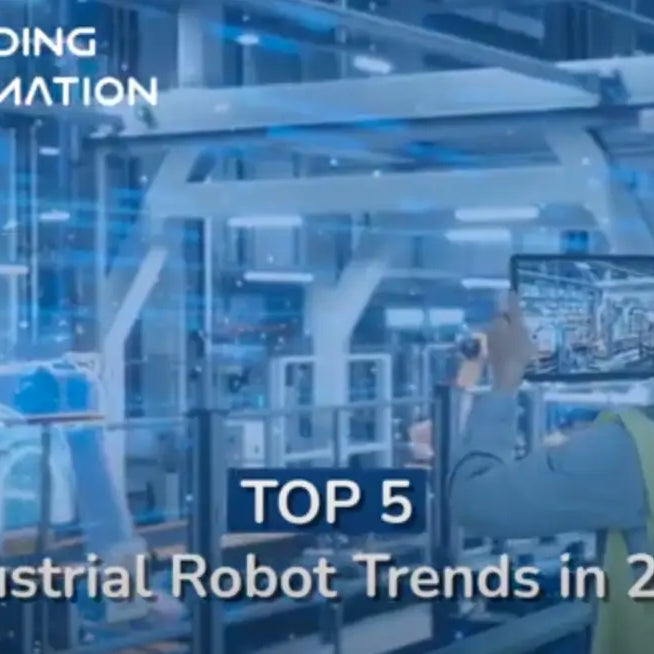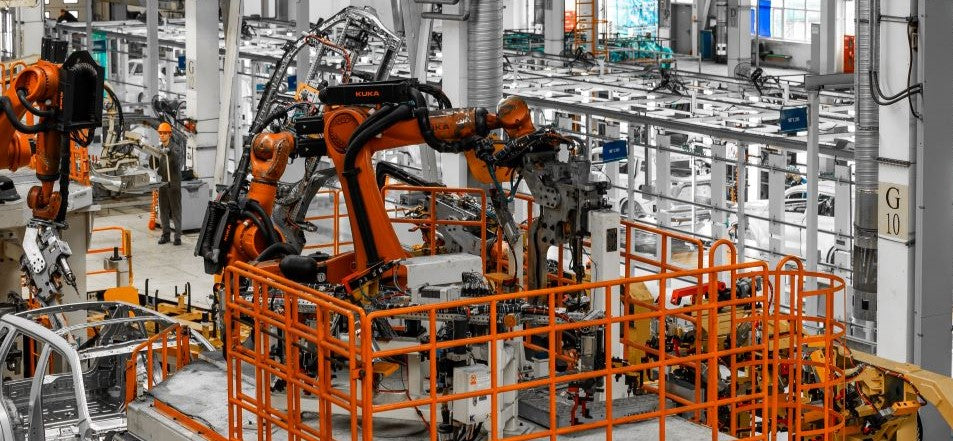
Orders & Worldwide
Orders & Worldwide

Are you looking for a comprehensive guide on industrial robot maintenance? Look no further! In this blog post, we'll be exploring Robot Rx: An In-Depth Guide to Industrial Robot Maintenance. This guide is designed to provide you with a better understanding of the essential maintenance tasks that keep your robotic systems running efficiently and safely. We'll discuss how to identify potential problems, how to prevent and troubleshoot them, and how to make sure you're up to date with the latest maintenance procedures. With our helpful advice, you'll be able to keep your robots working at their peak performance. So let's get started and dive into our Robot Rx guide.
Industrial robot maintenance is crucial for the smooth operation of your robotic systems. Neglecting maintenance can lead to a wide range of problems, including reduced performance, increased downtime, and potential safety hazards. By understanding the importance of industrial robot maintenance, you can ensure that your robots are operating at their best and maximizing your return on investment.
One of the key reasons why industrial robot maintenance is important is that it helps to prevent breakdowns and costly repairs. Regular maintenance allows you to identify and address potential issues before they escalate into major problems. This proactive approach can save you both time and money in the long run.

Another important aspect of industrial robot maintenance is ensuring the safety of your workers. Robots are powerful machines, and if not properly maintained, they can pose serious risks to operators and other personnel working in close proximity. Regular maintenance helps to keep your robots in safe working condition, reducing the likelihood of accidents or injuries.
Industrial robot maintenance is crucial for the smooth operation of your robotic systems. Neglecting maintenance can lead to a wide range of problems, including reduced performance, increased downtime, and potential safety hazards. By understanding the importance of industrial robot maintenance, you can ensure that your robots are operating at their best and maximizing your return on investment.
One of the key reasons why industrial robot maintenance is important is that it helps to prevent breakdowns and costly repairs. Regular maintenance allows you to identify and address potential issues before they escalate into major problems. This proactive approach can save you both time and money in the long run.
Another important aspect of industrial robot maintenance is ensuring the safety of your workers. Robots are powerful machines, and if not properly maintained, they can pose serious risks to operators and other personnel working in close proximity. Regular maintenance helps to keep your robots in safe working condition, reducing the likelihood of accidents or injuries.
In addition, proper maintenance helps to prolong the lifespan of your robots. By regularly inspecting and servicing robot components, you can extend their longevity and avoid premature wear and tear. This not only protects your investment but also ensures that your robots continue to operate efficiently and effectively.
Overall, understanding the importance of industrial robot maintenance is essential for maximizing the performance, safety, and longevity of your robotic systems. It is a critical investment that pays off in terms of improved productivity, reduced downtime, and enhanced workplace safety. So make sure to priorities regular maintenance to keep your robots running smoothly and to achieve optimal results.
When it comes to industrial robots, there is no one-size-fits-all solution. Different types of robots have different maintenance requirements to ensure optimal performance. Let's explore the various types of industrial robots and their specific maintenance needs.
These robots are known for their flexibility and range of motion. They typically have multiple rotary joints, allowing them to mimic human arm movements. To maintain articulated robots, regular inspection and lubrication of their joints are essential. Additionally, you should check for any signs of wear and tear in the arms and replace damaged components promptly.
Also known as gantry robots, these robots operate along three perpendicular axes. They are commonly used for pick-and-place operations. To maintain Cartesian robots, you need to regularly clean and lubricate the linear guides and ball screws. This ensures smooth movement and reduces the risk of jamming or seizing.
These robots are designed for high-speed and precision tasks, such as assembly and packaging. Delta robots have a unique parallel link structure. To maintain them, it's important to regularly inspect and clean the parallel link mechanisms. You should also check for any loose or damaged belts and replace them as needed.
SCARA stands for Selective Compliance Assembly Robot Arm. These robots are commonly used in assembly and material handling applications. To maintain SCARA robots, regular inspection of the arms, joints, and belts is crucial. Ensure that all the moving parts are properly lubricated and that the belts are tensioned correctly.
Remember, these are just a few examples of industrial robot types. Each type has its own specific maintenance requirements, which may vary based on factors such as workload, environment, and manufacturer recommendations. By understanding the specific maintenance needs of your robots, you can ensure they remain in optimal condition, reducing downtime and maximizing their longevity and performance.
Now that we've discussed the importance of industrial robot maintenance and explored the various types of robots and their specific maintenance requirements, let's delve into the world of robot components and how to maintain them.
Robots are complex machines with various components that work together to perform their tasks. Some of the key components that require regular maintenance include the robot's end-of-arm tooling, sensors, motors, and control systems.
To maintain the end-of-arm tooling, it's essential to regularly inspect and clean the grippers, vacuum cups, or any other tooling that the robot uses to interact with its environment. Cleaning them ensures optimal gripping or suction performance and prevents any debris or contaminants from affecting the robot's functionality.
Sensors play a crucial role in robot operation, as they provide the necessary feedback for the robot to perform tasks accurately. Regular calibration and cleaning of the sensors are essential to ensure accurate readings. Additionally, checking the wiring connections and replacing any damaged sensors is important to avoid malfunctions.
The robot's motors are responsible for the robot's movement, and they require regular lubrication to ensure smooth operation. Checking for any signs of wear or damage in the motor components is crucial, and any damaged parts should be promptly replaced.
Finally, the control system is the brain of the robot, and it's important to regularly update the software to ensure optimal performance. Keeping track of the manufacturer's updates and implementing them is crucial to benefit from the latest improvements and bug fixes.
By regularly maintaining these robot components, you can ensure that your robots are operating at their best and minimise the risk of breakdowns or malfunctions. Taking the time to inspect, clean, and replace components as needed will help extend the lifespan of your robots and maximise their performance and efficiency. So make sure to include these maintenance tasks in your regular robot maintenance schedule for optimal results.
Regular maintenance is essential to keep your industrial robots operating at their best and to minimise the risk of breakdowns or malfunctions. Here are some important maintenance tasks that should be included in your regular maintenance schedule.

Regularly cleaning the robot and its components helps to remove any dirt, dust, or debris that may accumulate over time. This includes cleaning the robot's exterior, as well as its end-of-arm tooling, sensors, and other components.
Proper lubrication of the robot's moving parts is crucial to ensure smooth operation. This includes lubricating joints, linear guides, ballscrews, and other areas where friction may occur. Be sure to use the appropriate lubricant for each component.
Regularly inspecting your robot for any signs of wear, damage, or loose connections is important. This includes inspecting the arms, joints, belts, wiring, and any other components that may be susceptible to wear and tear.
If your robot relies on sensors for accurate operation, regular calibration is necessary to ensure precise readings. This includes calibrating any vision systems, force sensors, or other sensing devices that your robot may have.
Keeping your robot's control system up to date is crucial for optimal performance. Regularly check for software updates from the manufacturer and implement them as needed.
If any components are damaged or worn out, it's important to promptly repair or replace them. This includes belts, sensors, motors, and other critical components.
It's important to create a regular maintenance schedule and stick to it. This will help ensure that all necessary maintenance tasks are performed in a timely manner, reducing the risk of unexpected breakdowns and maximizing the lifespan and performance of your industrial robots.
Leave a comment